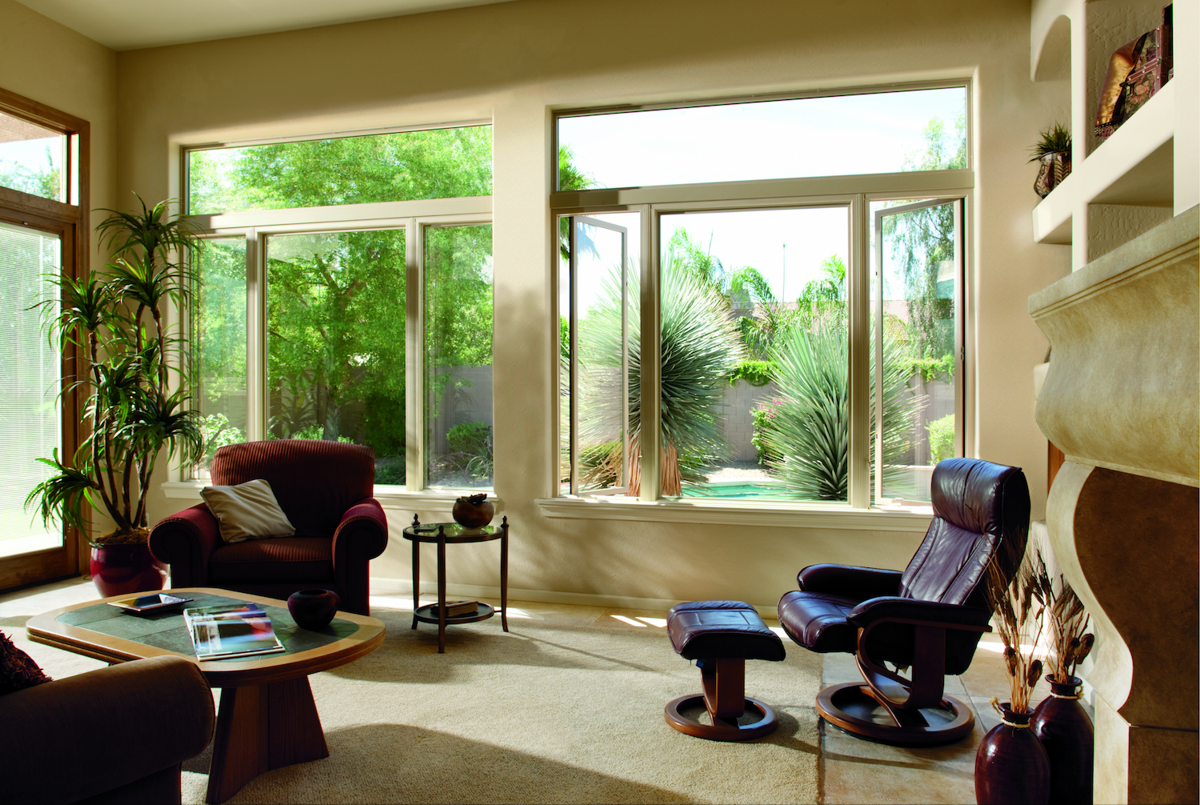Question: My home feels rather dark. What are some ways to make my home feel sunnier?
Answer: We like to see a home have as much natural light as possible. We spoke with Tucson architect Chauncey Meyer, a Rosie-Certified Partner, who says, “my goal when designing a project is to assure that there is so much natural light in the home that the lights do not need to be turned on.” In Southern Arizona, where it is sunny on average of 299 days per year and Northern Arizona with 260 clear or partly cloudy days, this makes sense.
Q: What is the best way to achieve natural light?
A: The best way to include natural light in our homes is through the windows. A home filled with natural light, especially if it is coming from above, creates a sense of well-being and an uplifting mood, says Meyer. There are many opportunities to use windows to enhance your home with light. Clearstory windows, dormer windows, patio doors, bay windows, and transom windows are all great options. Don’t forget about skylights and solar tubes as options.
Q: What are the best placement practices for windows?
A: Meyers says that his goal is to place windows in the wall where the top of the window is at least 8 feet above the floor as this allows the light to be deflected from the ceiling and to be cast on surfaces below. When there is room above the window, the addition of transom or clearstory windows can add more light. Having 8-foot doors will add to the experience of light as well. When designing a home or replacing windows, Meyer adds, “orientation is important and east west exposure for windows should be kept to a minimum.” Consider windows that open as they can provide good ventilation by opening windows from opposite ends of the house, creating a gentle movement of air.
Q: Will my home be hot if I add too many windows?
A: Of course, adding lots of glass can pose a dilemma of heat gain in the home as 50% of the heat that comes into the home is through the windows. Rosie says there are solutions to this dilemma. First, choose the right window. Rosie recommends investing in windows that are Energy Star rated. Rosie likes the Impervia line from Pella with the following options:
- Glass should have a Low-E (low emissivity) glass coating that prevents heat loss. Low-E glass works to keep your home more comfortable by reflecting heat back into the room in the winter and reflecting heat away from your home in the summer. Low-E glass blocks most of the sun’s harmful UV rays as well.
- Dual pane windows filled with argon are another way to slow conduction of heat to the inside during the summer months, and the cold to the inside in the winter.
- Impervia’s fiberglass frame is a much better choice than aluminum frames as they are energy efficient, hold a high R-value, and are long lasting and low maintenance. R-value is a measure of how much heat can get through the window in an hour. Windows with a high R-value allow less heat to enter your home.
Q: How can I minimize the heat for my existing east and west facing windows?
A: Shading your home is an important factor in keeping your energy consumption low. Shade can reduce surface temperatures from 20 to 30 degrees or more. Window glazing, sunscreens and roll down shades can be affordably added to existing windows. Structural overhangs, patio covers, trees and shade sails can all also add eye appeal.





